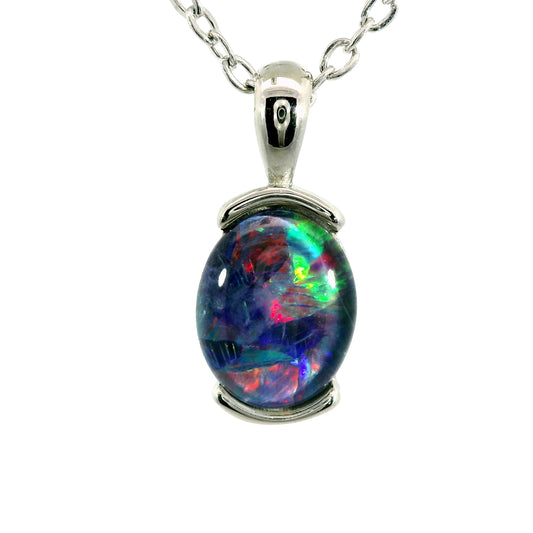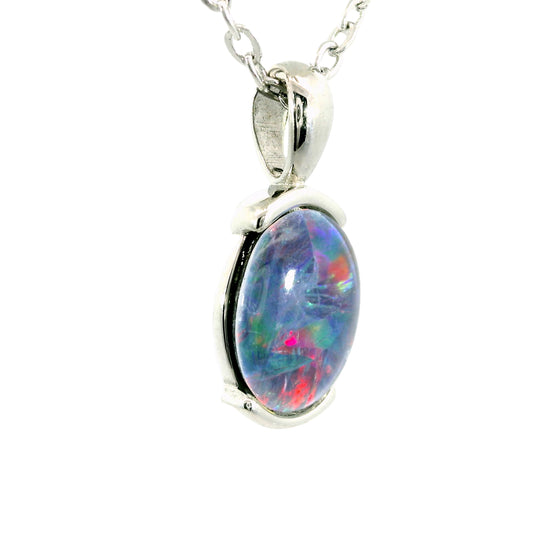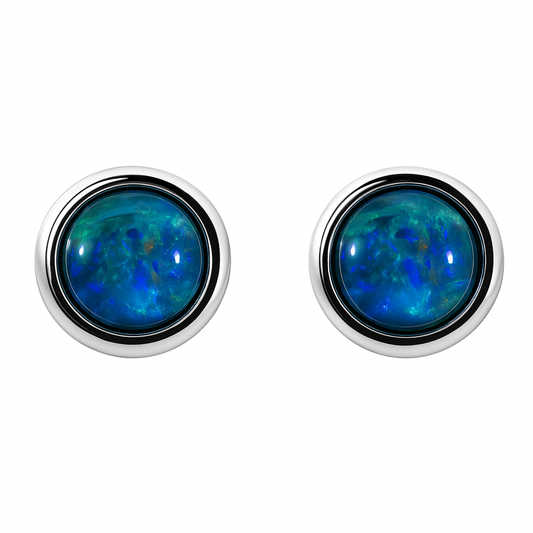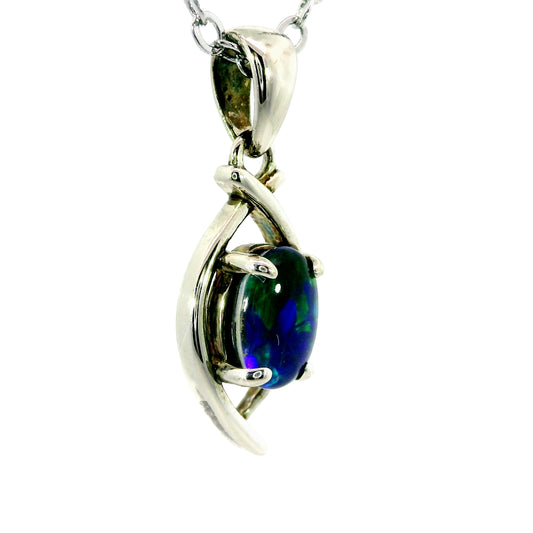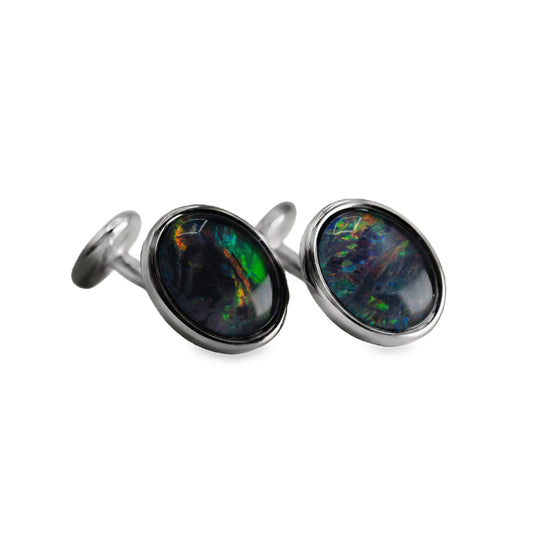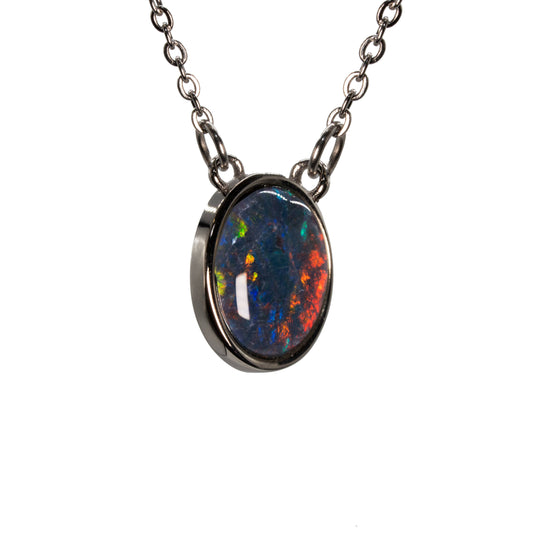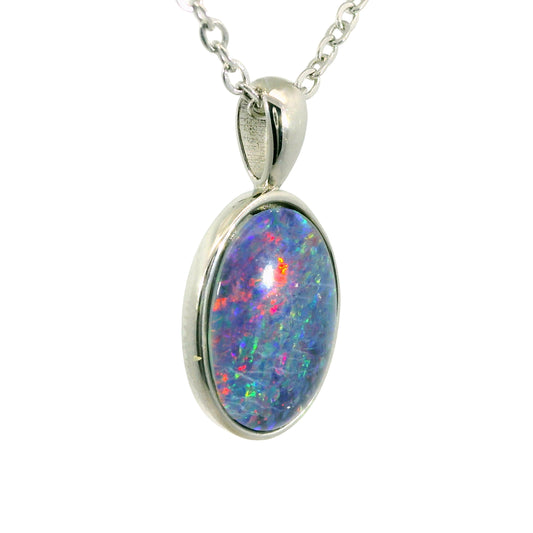Opal Care: How to Care and Maintain Your Jewellery
Opal stones are a rarity within nature and, due to their formation, should be treated with the utmost care. Precautions must be made to avoid the various breaks and damages that opals can sustain as a result of daily wear. Many myths and rumours are circulating online about treating opal in different ways, but this article is here to set the record straight. Our team of experts have collaborated to make sure you know exactly how to care for your opal, providing methods of care that are based on years of knowledge and personal experience.
Opal Jewellery Care: What NOT To Do
Do Not Attempt To Submerge Your Opal in Solvents, Acetone or Any Spirit-Based Chemicals. Gemstones do not like acids or alkalines
But the good news is.....
Opals LOVE Water!
This includes washing your hands or taking a shower. "Layered" Opals such as doublets and triplets are waterproof and can be worn in any water sports activity or daily water connection. Opal has a strong relationship with water that can be linked back to its very creation. Not only is it composed of water (around 5-6%), but it also has the ability to absorb water.
This has been the downfall of ETHIOPIAN Opal which is a "hydrophane" molecular structure (like a sponge) and water will be literally sucked into the opal on contact, which can cause the Ethiopian opal to loose its colour. Then, as the water rapidly evaporates, this causes the opal stone to crack, damaging the stunning gem. Submerging the opal can cause stress on its composition, and overall lead to damage through a warping of its internal structure. This is a factor that contributes to colour loss and fading, and should be avoided at all costs.
Fortunately, Australian Opal does not suffer this fate. Australian Opal is "stable" and will NOT be affected by water. So, be sure to stay AWAY from harsh chemicals but do ENJOY your water activities! Note: this is a general rule for all gemstones (including diamonds).
If Possible, Avoid Sudden DRAMATIC Changes In Temperature.
Unfortunately, it is possible to damage your opal without knowing. If the opal stone is set permanently into jewellery, or if it is exposed to rapid and extreme changes in hot and cold temperatures, it is at risk of damage. This is because the water content held within the opal is also being affected. Rapid and extreme changes in temperature can cause minor fractures within the stone itself, weakening the overall structure. The reason this is so damaging is that these fractures can take a long time to become visible, and when this occurs, it can be nearly impossible to fix. The good news is to inflict this sort of damage, you would have to put an Opal in your freezer, and then take it out and place it on a hit frying pan. The key here is rapid and EXTREME changes! So rest assured that coming in from a cold outdoor setting into a warm room is not an "extreme" change and will not damage your opal jewellery.
Avoid Dropping Your Jewellery
Dropping your opal jewellery on any hard surface can have a significant and negative impact on the stone’s integrity. Even small taps that occur during daily wear can cause a strain. By avoiding this unnecessary pressure, you will be able to uphold the structural integrity of your opal jewellery, allowing it to last much longer. A little-known fact is that diamonds will also chip or fracture if dropped. In fact, any gem will crack, chip or fracture if dropped or hit with blunt force!
impact on the stone’s integrity. Even small taps that occur during daily wear can cause a strain. By avoiding this unnecessary pressure, you will be able to uphold the structural integrity of your opal jewellery, allowing it to last much longer. A little-known fact is that diamonds will also chip or fracture if dropped. In fact, any gem will crack, chip or fracture if dropped or hit with blunt force!
Opal Jewellery Care: What You SHOULD Do
How do I Fix Damaged Jewellery?
To put it simply: ask us!!!! Each opal and piece of opal jewellery is unique and our vastly experienced team have repaired, recut, and remade thousands of damaged gems over the last few decades. If your opal has become scratched, we can re-polish the stone. This fix is quite simple and is arguably the most common. Other problems, such as claw damage or a loose stone, can be fixed by a repair by our jeweller. Cracks within the opal stone's structure can be a lot harder to fix, but it's not impossible.
Storing Your Opal
If you need to store your opal for a long period of time, it is important that you do so correctly. Ensure that the area you have picked is safe from harsh temperature changes (like under a hot light), as this will minimise heat damage. 
Simply placing your opal in a cloth bag should be enough. But for a long storage period, some recommend placing your opal with some form of moisture (such as cotton wool with drops of water, or a damp cloth) into a sealed bag, so the gemstone is stored securely with adequate moisture.
Cleaning Your Jewellery
There are various ways to clean and maintain your jewellery, both at home and through professional jewellers.
Polishing and Sonic Cleaners
It’s always good to take your opal to a professional jeweller to clean and examine. When this is done, there are two main options to be considered: polishing the gem, or using a sonic cleaner. It should be noted that sonic cleaners can weaken the glue bond within doublets and triplets, causing them to break and fall apart. Solid opal will have no problems through this cleaning method. Otherwise, a jeweller will repolish your items, using an abrasive cloth or material to ‘smooth out’ the surface.
Jewellery Cloths
A DIY solution to cleaning your jewellery is jewellery cloths. These are a highly specialised material that is made especially for gold and silver (with each cloth is made for a different metal) and can help maintain the brightness of your opal and the clarity of the metal.
How To Care For Opals from Australian Opal Cutters on Vimeo.












































































































